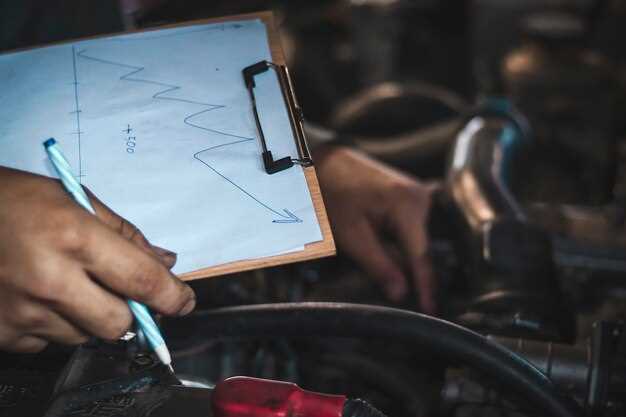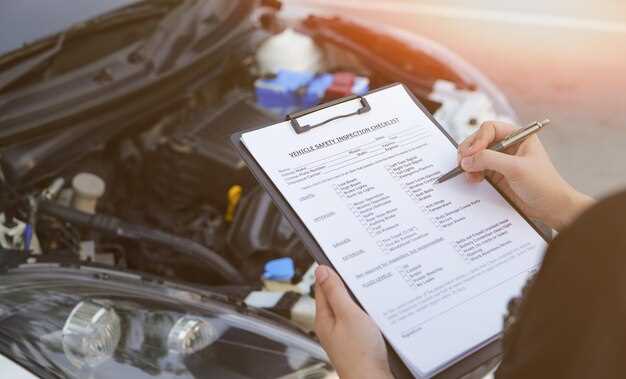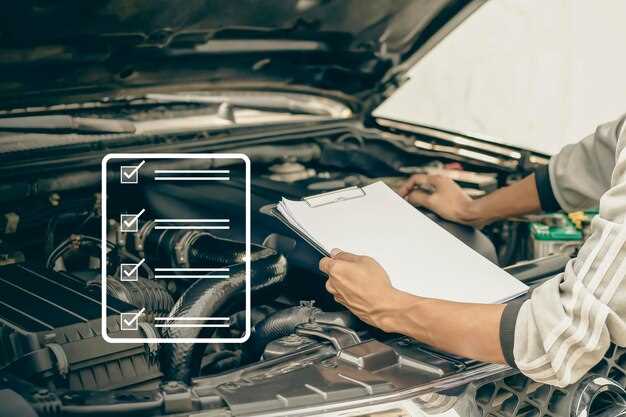
Owning a classic muscle car is not just a passion; it’s a commitment to preserving a piece of automotive history. As seasons change, so do the needs of these powerful machines. A well-maintained classic muscle car not only enhances your driving experience but also ensures its longevity and value. This seasonal maintenance guide aims to help you check the essential aspects of your vehicle, making sure it’s ready for whatever the road may bring.
Each season presents unique challenges and opportunities for classic muscle cars. Whether it’s the sweltering heat of summer or the icy grip of winter, specific maintenance tasks need to be performed to keep your car running smoothly. By following this guide, you’ll be equipped to tackle seasonal checks with confidence, ensuring your classic beauty is not just another relic, but a roaring testament to engineering excellence.
From checking fluid levels and tire conditions to preparing for winter storage, our guide outlines the comprehensive steps necessary to keep your vehicle in top shape. Regular seasonal maintenance will help you maximize your driving pleasure while preserving the value of your classic muscle car for future generations. Let’s dive into the details of how you can keep that engine purring and those wheels turning, no matter the season.
Inspecting and Replacing Fluids Before Summer Drives
As the summer driving season approaches, it’s essential to carry out seasonal maintenance on your classic muscle car. One of the most critical aspects of this maintenance is inspecting and replacing various fluids. Proper fluid management ensures optimal performance, enhances longevity, and prevents possible breakdowns on the road.
The primary fluids to focus on include engine oil, coolant, transmission fluid, brake fluid, and differential fluid. Each of these plays a crucial role in maintaining overall vehicle functionality, especially during the heat of summer.
| Fluid Type | Inspection Steps | Replacement Guidelines |
|---|---|---|
| Engine Oil | Check oil level and color; look for any signs of contamination. | Replace if dark or gritty; generally every 3,000 to 5,000 miles. |
| Coolant | Inspect level and condition; check for debris or discoloration. | Flush and replace every 2 to 3 years for optimal protection. |
| Transmission Fluid | Check for level and consistency; look for burnt smell. | Replace every 30,000 to 60,000 miles depending on usage. |
| Brake Fluid | Examine moisture content and level within the container. | Change every 1 to 2 years to maintain brake performance. |
| Differential Fluid | Inspect fluid level and inspect for metal particles. | Replace every 30,000 to 50,000 miles based on driving conditions. |
Regularly checking and replacing these fluids is an integral part of seasonal maintenance. This proactive approach not only minimizes the risk of mechanical failure but also enhances the overall driving experience. Make sure to keep records of fluid changes, as this can provide valuable insights into your vehicle’s health and performance over time.
Preparing Tires for Seasonal Changes
As the seasons change, it’s crucial to perform maintenance on your classic muscle car’s tires to ensure optimal performance and safety. Begin by checking the tire pressure. Fluctuations in temperature can cause air to expand or contract, leading to under-inflation or over-inflation. Properly inflated tires contribute to better fuel efficiency and handling.
Next, inspect the tread depth. Worn tires can compromise traction, especially in wet or icy conditions. Use a tread depth gauge or the penny test to determine if tire replacement is necessary. If the tread is shallow, consider investing in new tires suitable for the upcoming season.
Don’t forget to examine the sidewalls for cracks, bulges, or other signs of damage. Such issues can lead to blowouts or decreased performance. If you notice any irregularities, it is vital to address them promptly, potentially by replacing the affected tires.
It’s also essential to rotate your tires regularly. This practice helps to ensure even wear across all tires, extending their lifespan and maintaining effective performance. Refer to your owner’s manual for recommended rotation intervals.
Finally, consider seasonal tires. Switching to dedicated winter or summer tires can dramatically enhance your car’s handling and safety as road conditions change. Make sure to store off-season tires properly, keeping them in a cool, dry place to prevent damage.
Battery Maintenance Tips for Winter Storage
When it comes to seasonal maintenance of classic muscle cars, ensuring that your battery is well-maintained is crucial, especially during the winter months. Cold temperatures can significantly affect battery performance and lifespan, making it essential to take proper care of your battery before storage.
1. Disconnect the Battery: Before storing your muscle car for the winter, disconnect the battery cables. Start by removing the negative terminal first, followed by the positive terminal. This will prevent any potential drain from the car’s electrical system.
2. Clean the Terminals: Corrosion can form on battery terminals, leading to poor connections. Clean the terminals and cable ends with a mixture of baking soda and water. Use a wire brush for stubborn corrosion, then rinse and dry thoroughly.
3. Check the Charge Level: Before winter storage, ensure your battery is fully charged. A well-charged battery is less likely to freeze and will help maintain its health throughout the season. Use a multimeter to check the voltage; it should read around 12.6 volts or more for a fully charged battery.
4. Use a Battery Maintainer: Consider using a smart battery maintainer or trickle charger during winter storage. These devices keep your battery at an optimal charge level without overcharging, thus prolonging its lifespan and ensuring it’s ready when you’re ready to hit the road.
5. Store in a Suitable Environment: If possible, store your battery in a warmer area, like a garage, rather than in the vehicle. Cold temperatures can cause the electrolyte to freeze, particularly if the battery is not fully charged. Keeping it at room temperature will help prevent damage.
6. Regular Checks: Even during storage, periodically check your battery status. Ensure that the battery remains clean, and the connections are intact. If you’re using a maintainer, monitor its performance to ensure it operates correctly.
By following these battery maintenance tips, you can ensure your classic muscle car’s battery remains in top shape during winter storage, ready to provide reliable performance when the driving season resumes.
Checking and Servicing Belts and Hoses Each Season
Proper maintenance of belts and hoses is crucial for the performance and longevity of your classic muscle car. Each season presents an opportunity to check and service these vital components to prevent breakdowns and ensure reliability. Here’s a comprehensive guide to help you with this essential task.
Belts and hoses are subject to wear and tear due to exposure to heat, moisture, and engine vibrations. Regular seasonal check-ups can identify potential issues before they escalate.
When to Check
It’s advisable to inspect belts and hoses at the start of each season:
- Spring: After winter storage, check for cold weather damage.
- Summer: Ensure belts and hoses can handle heat stress.
- Autumn: Prepare for winter conditions and inspect for wear.
- Winter: Maintain a lookout for cracking due to cold.
How to Inspect Belts

- Visual Inspection: Look for signs of fraying, cracking, or glazing.
- Tension Check: Ensure the belt maintains proper tension without excessive slack.
- Alignment: Check that the belt runs straight and is aligned with pulleys.
How to Inspect Hoses

- Look for Cracks: Examine hoses for any signs of splitting or bulging.
- Check for Leaks: Inspect the area around hoses for coolant leaks.
- Feel for Softness: A soft or spongy hose may indicate deterioration.
Servicing Tips
If you find any issues during your inspection, follow these servicing tips:
- Replace Worn Belts: If a belt shows significant wear, replace it immediately.
- Flush and Replace Coolant: This can prevent hose damage caused by coolant degradation.
- Secure Connections: Ensure all hose clamps are tight to prevent leaks and air intake issues.
Regular checks and timely servicing of belts and hoses are essential for maintaining the performance of your classic muscle car. By following these guidelines each season, you can enjoy a safe and reliable driving experience.
Cleaning and Protecting the Exterior Finish
Maintaining the exterior finish of your classic muscle car is essential for preserving its value and appearance. Seasonal maintenance tasks help ensure that your car remains in pristine condition throughout the year. Here are steps to effectively clean and protect the exterior finish.
Cleaning your vehicle is the first crucial step. Follow these guidelines:
- Rinse: Begin by rinsing the car with water to remove loose dirt and debris.
- Wash: Use a high-quality car soap and a microfiber wash mitt to gently clean the surface. Avoid household detergents as they can strip wax and damage the finish.
- Rinse Again: Thoroughly rinse off all soap to prevent residue from drying on the paint.
- Dry: Use a soft microfiber towel to dry the car, preventing water spots and preserving the finish.
Once your car is clean, it’s time to protect the exterior. Consider these protective measures:
- Waxing: Apply a good quality car wax every three to six months. Wax acts as a barrier against UV rays, dirt, and moisture.
- Sealant: For longer-lasting protection, use a paint sealant. It provides a strong bond with the paint and can last up to a year.
- Coating: Consider ceramic coatings for the ultimate in protection. These coatings offer superior durability and hydrophobic properties.
- Regular Inspection: Regularly check for scratches, chips, and other imperfections. Addressing these issues promptly can prevent larger problems down the road.
Incorporating these cleaning and protective measures into your seasonal maintenance routine will ensure your classic muscle car remains a head-turner for years to come.
Evaluating and Updating Safety Equipment Regularly
Ensuring the safety of your classic muscle car requires regular maintenance and thorough checks of all safety equipment. Over time, various components can wear out or become outdated, which may compromise your safety on the road.
Start by checking the condition of your seat belts. These are crucial for protection in case of an accident. Inspect for fraying, tears, or any signs of deterioration. If your vehicle’s safety belts do not retract correctly or show signs of wear, it’s advisable to replace them with new, high-quality options that meet current safety standards.
Next, evaluate your car’s braking system. Regularly check brake pads, rotors, and fluid levels to ensure optimal performance. A well-functioning brake system is vital for safety, especially in classic cars that may not have modern braking technology.
Additionally, examine tires for tread depth and pressure. Tires play a significant role in traction and stability. Make it a habit to check them regularly, and replace any tires that show signs of uneven wear or damage.
Don’t forget about lighting; all indicators, headlights, and brake lights must function properly. Faulty lights can lead to dangerous situations, so perform routine checks to ensure visibility is never compromised, especially during evening drives.
Lastly, consider equipping your vehicle with modern safety features. While classic cars may not have them by design, aftermarket solutions like backup cameras or parking sensors can enhance safety without compromising the vehicle’s classic aesthetics.
By committing to regular evaluations and updates of your safety equipment, you not only protect yourself and your passengers but also preserve the integrity of your classic muscle car for years to come.




